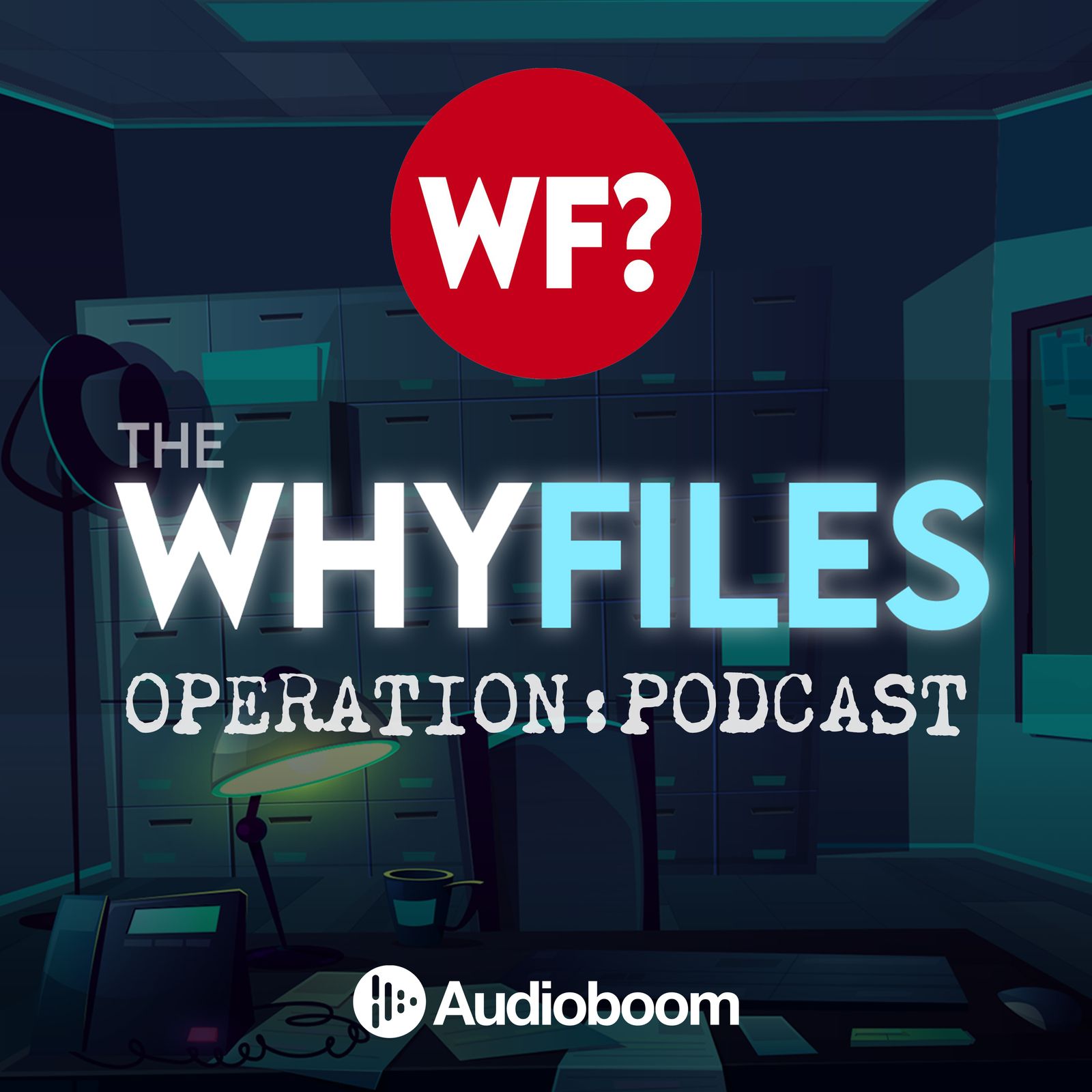.png)
Fully Modulated
Fully Modulated is your backstage pass to the stories and signals that shaped radio, TV, and wireless communication. Join Tyler, a broadcast engineer, as he uncovers the wild moments, quirky legends, and technical breakthroughs that keep the world connected. From vintage radio hacks to the real drama behind today’s digital waves, each episode blends deep research, humor, and storytelling for anyone curious about how media magic happens. Independent, insightful, and made for every fan who loves a good broadcast mystery.
Fully Modulated
Emergency Alert System: The Lifesaving Broadcast You Need to Understand
Ever wondered what happens when those jarring alert tones interrupt your favorite show? As a broadcast engineer, I'm taking you behind the curtain of one of America's most crucial yet misunderstood safety systems.
The Emergency Alert System isn't just annoying beeps—it's a sophisticated nationwide network designed to deliver critical information when seconds count. From severe weather warnings to AMBER alerts and potential national emergencies, EAS serves as the backbone of public warning infrastructure. This episode breaks down the complex chain of technology, protocols, and human coordination that makes it all work, revealing how alerts travel from government agencies to your devices even when other communications fail.
What makes this system special is its reliability when we need it most. With over 90% of Americans covered by EAS through various media platforms, it remains our most universal emergency communication tool. I share insights from my firsthand experience maintaining these systems, explaining how broadcast engineers ensure messages get through during crises and why regular testing is so important. You'll understand why rural communities especially depend on broadcast alerts when internet and cellular networks become unavailable during disasters.
The next time those distinctive tones sound, you'll appreciate the vital role they play in community safety. Have you experienced an emergency where these alerts made a difference? Share your story and subscribe to Fully Modulated as we continue exploring the technical marvels that keep our broadcast world running. Support the show and become a Modulator for just $3 monthly at fullymodulated.com to help us bring more engineering insights to curious minds everywhere.
Send me a text message with your thoughts, questions, or feedback
Visible Wireless by Verizon
Same Verizon coverage, way cheaper bills. No contracts or hidden fees. $20 off for both of us.
If you enjoyed the show, be sure to follow Fully Modulated and leave a rating and review on Apple Podcasts or your favorite podcast app—it really helps more people discover the show.
Fully Modulated is not affiliated with or endorsed by any station, media company, or network. All opinions are solely my own.
If you're enjoying Fully Modulated, please remember to like, follow, share and also rate and review the show. It really helps other curious listeners find us. Welcome to Fully Modulated, the show where signal meets podcast. I'm your host, tyler, a senior broadcast engineer for a network of public media stations. I've been in the broadcast industry since 2014 and currently certified as a CBNT through the Society of Broadcast Engineers. This podcast is designed to take you behind the scenes of the broadcast industry, especially the technical and engineering side, helping curious minds understand how all this works.
Speaker 1:Today, we're diving into the Emergency Alert System, or EAS. Alert System, or EAS. What is it, how does it function and why does it matter Whether you've heard these urgent tones interrupting your favorite radio or TV program or just seen the alerts on your phone? This episode will unpack what the EAS really is, its purpose and how it fits into the broader public safety ecosystem. The Emergency Alert System is a national public warning system in the United States designed to allow the president and authorized officials to quickly communicate urgent messages to the public through radio, television and other media. It's the successor to earlier systems, like the emergency broadcast system, which was used during the Cold War era. The idea is to give government agencies a way to distribute critical information rapidly in the time of crisis such as national disasters, severe weather, amber alerts for missing children or national security emergencies.
Speaker 1:For most people, eas means those attention-grabbing, sometimes unsettling audio tones followed by a spoken message. These tones are a coded signal that alerts broadcasters and other systems that an official message is coming through. Because the system is integrated into many broadcast and cable platforms, it ensures the widest possible reach to the public. Though it may feel like an interruption, eas is a crucial part of keeping communities safe. It acts as a backstop in case other communication channels, such as phones or the internet, are down or overwhelmed during an emergency.
Speaker 1:Eas is not just for emergencies declared by the president, though. It also serves state and local emergency management agencies. This decentralized approach allows tailored alerts relevant to particular regions. For example, if a tornado is spotted in a certain county, the local emergency manager can trigger an EAS message tailored to that area, warning residents to take shelter. To make this possible, broadcasters, cable operators, satellite services and wireless providers are all required by law to participate in the emergency alert system. Each participant has equipment that monitors certain sources of emergency messages and automatically relays them to the public. This network of cooperation ensures that when a message is issued, it spreads quickly and reliably. According to the Federal Communications Commission, the FCC, over 90% of Americans have access to EAS messages either by radio or TV, and millions also receive alerts via the Wireless Emergency Alerts WEA on their mobile devices. The system operates 24-7, constantly monitoring for alert signals and testing regularly to ensure readiness. In 2022 alone, thousands of EAS activations were made nationwide, ranging from weather alerts to amber alerts. These activations have proven life-saving, giving people critical time to prepare or respond.
Speaker 2:This is a coordinated monthly test of the broadcast and cable television systems in your area. Equipment that can quickly warn you during emergencies is being tested. If this had been an actual emergency, an official message would have followed the alert tone.
Speaker 1:At its core, the emergency alert system relies on a carefully designed chain of equipment and protocols that enables messages to flow from its originators to the public. When an authorized agency issues an alert, the message is encoded with digital header tones that contain important information like the type of alert, the affected area and the duration. Broadcasters and other participants have receivers that listen for these tones. When they detect a valid alert, the equipment automatically interrupts regular programming and broadcasts the emergency message. This system is designed to be automated.
Speaker 1:To minimize delay and reduce the chance of human error, the EAS uses a specialized digital protocol called SAME, specific Area Messaging Encoding. Additionally, the EAS messages include both audio and digital data streams. The audio is the voice message heard by the listeners, while the digital data can be used by compatible devices to trigger visual alerts, record the alert or perform other automated actions. The EAS operates in several broadcast frequencies and relies on a nationwide network of relay stations. Tests are conducted regularly. Weekly tests from the FCC require broadcasters to transmit a test message verifying that the system is functional. These tests help maintain system readiness and verify technical compliance. In addition to broadcast radio and TV, cable systems and satellite providers have integrated EAS capabilities as well, expanding the reach to millions of viewers and listeners.
Speaker 3:Columbia County in south central Wisconsin. Northeastern Dane County in south central Wisconsin. Northwestern Jefferson County in southeastern Wisconsin. Southwestern Dodge County in southeastern Wisconsin. Until 1 15 AM. At 12 42 AM, severe thunderstorms capable of producing both tornadoes and extensive straight-line wind damage were located near Columbus, moving southeast at 40 miles an hour. Hazard tornado 1.
Speaker 1:If you are enjoying this deep dive into the emergency alert system, please like, follow, share and don't forget to rate and review Fully Modulated. Your support helps more people discover the show. At first glance, eas might seem just like an interruption, but it serves a vital lifeline during emergencies. For many people, the alert tones are a signal to pay attention, a cue that important information is coming Understanding. Eas can help listeners know what to expect, how to respond and why. It's important not to ignore these messages. Especially during national disasters like hurricanes, floods or wildfires, eas messages can provide life-saving instructions, evacuation orders, shelter locations or safety precautions in rural or underserved areas where internet or cellular signals might be weak. Eas via radio or TV is often the most reliable source. For broadcast engineers such as myself and station managers, eas is also a critical responsibility. The system reliability depends on proper configuration, regular maintenance and compliance with FCC rules. Engineers must ensure their equipment is up to date, tests are performed and alerts are relayed without delay or error. This coordination between engineers, emergency managers and broadcasters help maintain trust in the system. When people hear those alert tones, they know it's serious. Studies have shown that when the public understands the purpose of alerts and trusts, their accuracy, compliance with instructions increases.
Speaker 1:The Department of Homeland Security emphasizes public education about EAS to improve responsiveness. Furthermore, the integration of EAS with modern technologies like the wireless emergency alerts means the reach and impact are expanding, making the system more vital than ever. Myself, as a broadcast engineer, I know firsthand how crucial EAS is for community safety. It's not just technology. It's about connecting people to information that can save lives. Today, we unpack what the emergency alert system is, how it works and why it matters. In the next episode we'll explore the rich history of emergency broadcasts tracing EAS and how it evolved from earlier systems. If you have questions or stories about EAS, send them my way. You can text the show using the link in the episode description. Thanks for listening. If you like this episode, please like, follow, share and rate and review Fully Modulated. You can also become a modulator by supporting the show for as little as $3 a month at fullymodulatedcom. Your support helps us keep bringing you deep dives into the broadcasting world.
Speaker 3:This concludes our broadcast day Click.
Podcasts we love
Check out these other fine podcasts recommended by us, not an algorithm.

The Why Files: Operation Podcast
The Why Files: Operation Podcast
Sightings
REVERB | QCODE
This Week In Radio Tech (TWiRT)
guysfromqueens
The Ezra Klein Show
New York Times Opinion
Alive with Steve Burns
Lemonada Media
Friends Who Pretend
Chris Bryant
99% Invisible
Roman Mars
Hard Fork
The New York Times
Tetragrammaton with Rick Rubin
Rick Rubin
The 404 Media Podcast
404 Media
The Daily
The New York Times
Honestly with Bari Weiss
The Free Press
Search Engine
PJ Vogt
Pod Save America
Crooked Media
Danny Jones Podcast
Danny Jones | QCODE
Darknet Diaries
Jack Rhysider
Soul Boom
Rainn Wilson
